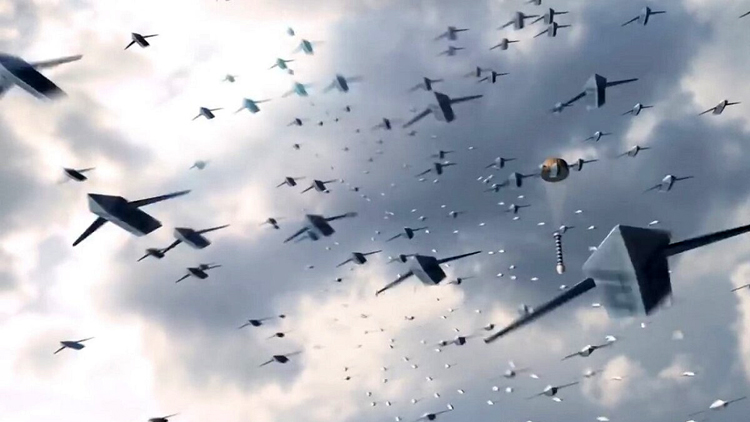INDIAN ARMED FORCES CHIEFS ON OUR RELENTLESS AND FOCUSED PUBLISHING EFFORTS

The insightful articles, inspiring narrations and analytical perspectives presented by the Editorial Team, establish an alluring connect with the reader. My compliments and best wishes to SP Guide Publications.

"Over the past 60 years, the growth of SP Guide Publications has mirrored the rising stature of Indian Navy. Its well-researched and informative magazines on Defence and Aerospace sector have served to shape an educated opinion of our military personnel, policy makers and the public alike. I wish SP's Publication team continued success, fair winds and following seas in all future endeavour!"

Since, its inception in 1964, SP Guide Publications has consistently demonstrated commitment to high-quality journalism in the aerospace and defence sectors, earning a well-deserved reputation as Asia's largest media house in this domain. I wish SP Guide Publications continued success in its pursuit of excellence.
- Indian Air Force Aims for Full Indigenous Inventory by 2047 — Air Chief Marshal A.P. Singh
- Rajnath Singh assumes charge as Defence Minister for the second consecutive term
- Interim Defence Budget 2024-25 — An Analysis
- Union Defence budget 2024
- Prime Minister Modi Flies in the LCA Tejas
- New Chapter in India-Italy Defence Ties
- Airpower beyond Boundaries
India seeks US help for drone swarm technology to prepare for warfare of the future
Path-breaking proposal set to come up at DTTI meeting on October 24

To prepare for future of warfare, the Indian Air Force (IAF) has asked for a programme to develop both air-launched drone swarms to overwhelm enemy air defences and also counter-unmanned aerial systems (UAS) technologies to detect and defeat similar attacks by an enemy.
A glimpse of the devastating use of drone swarms was provided in the recent attack which crippled Saudi Arabia's biggest oil processing facility.
A path-breaking proposal for a collaborative project between the US Air Force Research Laborartory and India's Defence Research and Development Organisation is likely to be taken up at the India-US Defence Trade & Technology Initiative (DTTI) meeting in New Delhi on October 24, SP's Aviation has learnt from reliable sources. The talks will be led by the US Under Secretary of Defense for Acquisition and Sustainment Ellen Lord and India's Secretary Defence Production Subhash Chander.
Sources indicated that India and the US could take forward a US Air Force Research Laboratory concept on small unmanned systems which could be launched from C-130J and C-17 military transport aircraft which are used by both countries. The proposal is for "ground up" development of drone swarm technology
At his press conference on October 4 in New Delhi, IAF Chief Air Chief Marshal RKS Bhadauria, while responding to a question from SP's Aviation, disclosed that a procurement case had been initiated by the IAF for drone swarm warfare.
Sources indicated that India and the US could take forward a US Air Force Research Laboratory concept on small unmanned systems which could be launched from C-130J and C-17 military transport aircraft which are used by both countries. The proposal is for "ground up" development of drone swarm technology.
Swarming is a low-cost concept aimed at overwhelming an adversary with large numbers of expendable drones which can function in a coordinated manner. This is also meant to reduce the pressure of having large numbers of very expensive manned fighter aircraft, and act as an inexpensive force multiplier. This concept is poised to revolutionise warfighting.
Significantly, India is also seeking counter-UAS technologies to detect and defeat swarms. The kill solutions India is looking at include electro-magnetic lasers. The American aerospace giant Lockheed Martin claims to have progress in this area with the Q-53 radar and a high-powered laser beam
Drone swarms could have a range of cross-border missions from overwhelming enemy radars to reconnaissance and destruction of targets. Only one of scores of small drones need to get through the adversary's defences for lethal targeting. These are difficult to spot on radar, and hard to shoot at with conventional weapons, particularly in swarms. Applications could also include search and rescue missions.
The US is known to be working on multiple drone swarm programmes ranging from Gremlins for developing micro-drones the size of missiles, capable of being air-dropped for reconnaissance missions, to the XQ-58 Valkyrie, a 9-metre drone dubbed 'Loyal Wingman' to manned fighters and capable of precision bombing.
Significantly, India is looking for access to counter-UAS technologies to detect and defeat swarms. The kill solutions India is looking at include electro-magnetic lasers. The American aerospace giant Lockheed Martin claims to have made progress in this area with the Q-53 radar and a high-powered laser beam.
"Recently, a Q-53 radar showed it can take on the challenging mission of detecting drones. In a demonstration, the radar system adapted to provide both air surveillance and counter fire target acquisition. The Q-53 system detected and tracked several unmanned aerial systems and provided that data to the command and control post," Lockheed Martin has declared.
"We are currently developing a 60-kilowatt system that combines multiple fiber lasers to generate the high power weapon beam," Rob Afzal, senior fellow with Lockheed Martin's Laser and Sensor systems division has stated on laser kill solutions.





